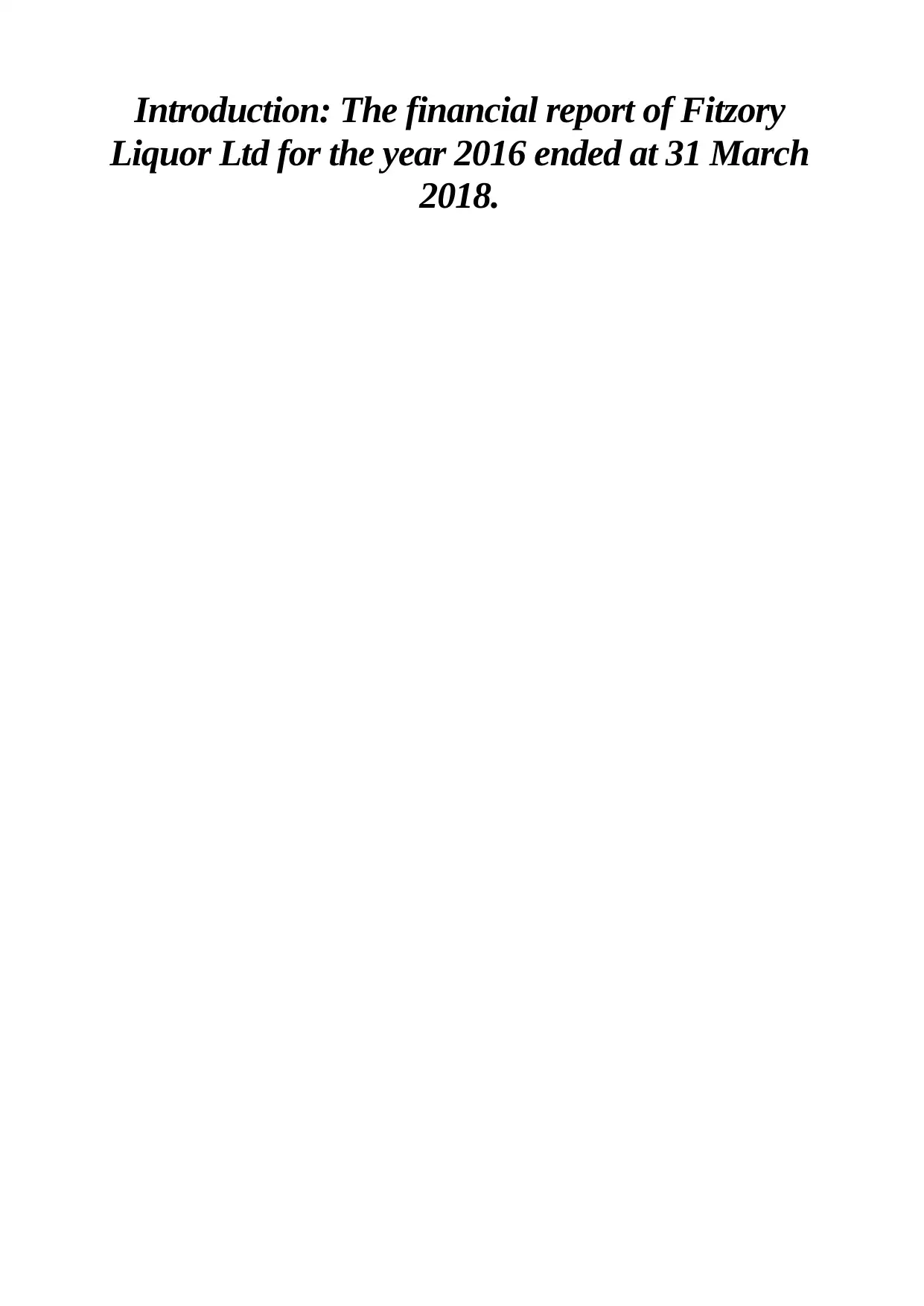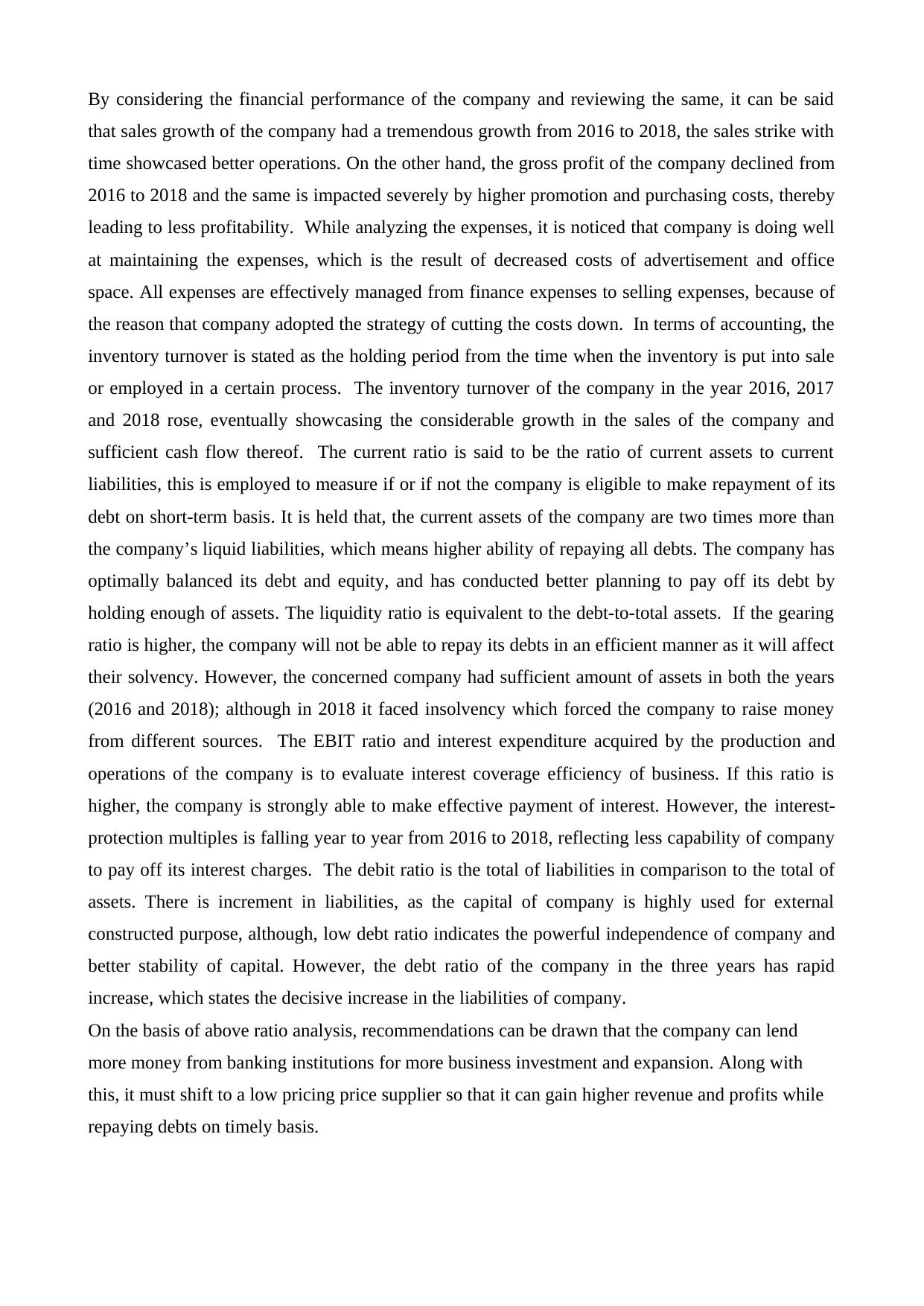Fitzory Liquor Ltd Financial Performance & Ratio Analysis (2016-2018)
VerifiedAdded on 2023/04/21
|2
|595
|245
Report
AI Summary
This report provides a financial analysis of Fitzory Liquor Ltd from 2016 to 2018. It highlights the company's sales growth alongside a decline in gross profit due to increased promotion and purchasing costs. While expenses were well-managed, the analysis covers key ratios like inventory turnover, current ratio, and debt ratio to assess the company's liquidity, solvency, and ability to manage debt. The report notes a decreasing interest coverage ratio, indicating a reduced capacity to pay interest charges, and suggests that while the company has assets, increased liabilities may pose challenges. Recommendations include seeking additional funding and negotiating with suppliers for lower pricing to improve profitability and debt repayment.
1 out of 2








![[object Object]](/_next/static/media/star-bottom.7253800d.svg)